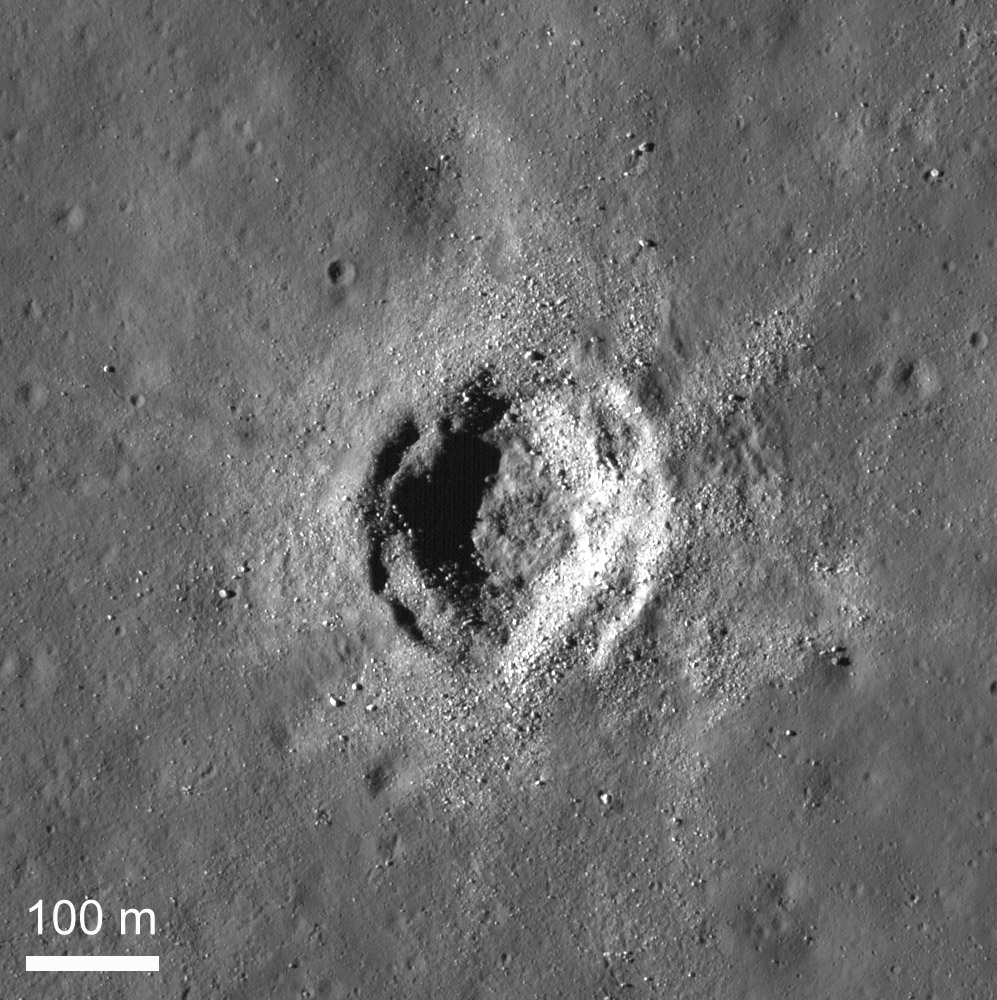
The unique morphology of craters such as this one (-17.25°S, 350.46°E) is the result of a contrast in the strength of a surface layer (in this case, the unconsolidated regolith) and a stronger underlying layer (here, mare basalt). The relatively weak regolith is more easily excavated than the basalt, resulting in the distinct "inner ring". For a given thickness of regolith (typically meters thick), craters formed entirely within the regolith are bowl-shaped. At increasing diameters, the crater excavates below the regolith into the stronger basalt flows, and they exhibit a central mound, a flat floor, and finally a concentric ring inside the crater rim.
Immediately inside the rim is a ridge with a diameter of about 167 m; the ridge itself is about 50-70 m wide and stands about 20 m above the adjacent crater floor. The center of the crater is marked by a low-reflectance rough area about 36 m in diameter, surrounded by a subtle ridge.

Scattered across the inner ridge and crater rim and extending beyond the crater rim is bright, bouldery ejecta. Boulders as large as 11 m have been ejected from the crater. The bright ejecta forms a more or less continuous blanket around the rim extending to 90-150 m. At greater distances, the ejecta breaks up into a series of rays of finer material that extend as much as 1 km from the rim.
Several of the larger boulders lie at the end of shallow troughs, indicating that they slid across the surface upon landing.

Related Featured Images
Curiously Fast Degradation of Small Lunar Crater
Probing the Lunar Surface Using Small Impact Craters
Published by Jeff Plescia on 6 June 2025